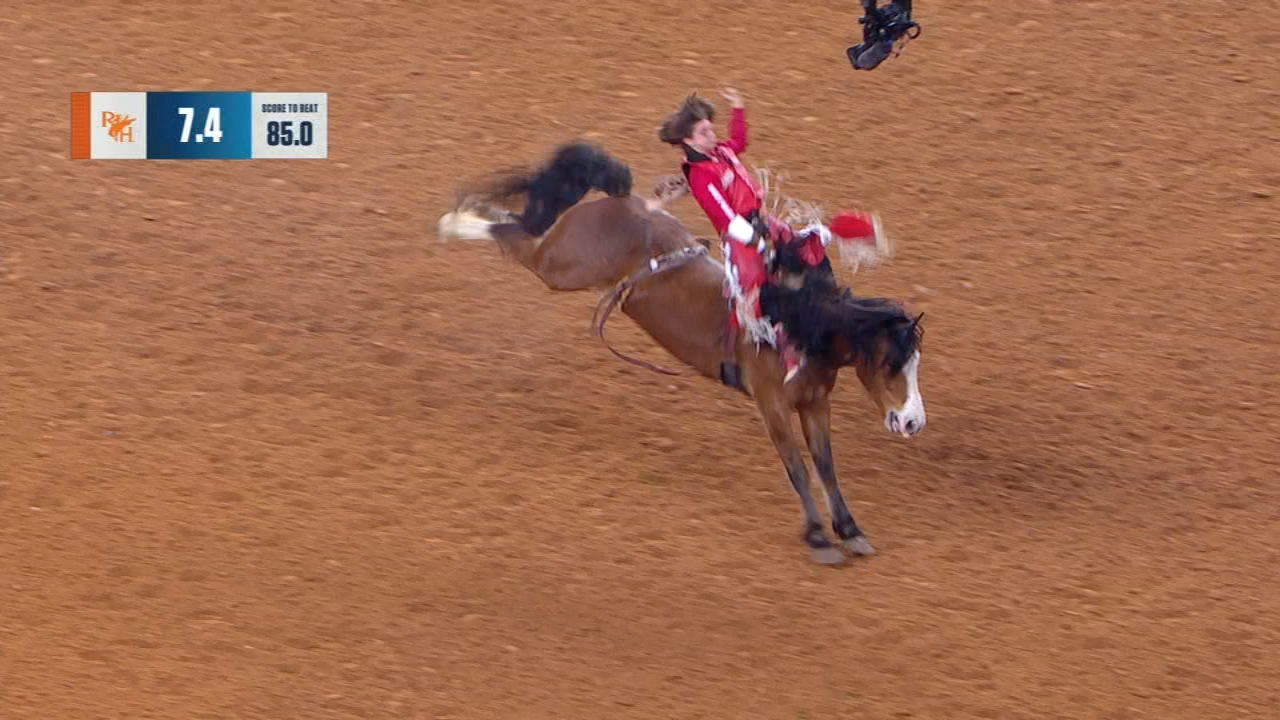No bull: Why becoming a rodeo clown is serious business

HOUSTON, Texas (KTRK) -- Rodeo clowns bring the laughs to thousands of people every night during the Houston Livestock Show and Rodeo, but the work they do to protect athletes after they've been bucked off from a raging bull is no laughing matter. Their jobs are physical and often, lives depend on them.
If you want to get into the profession of rodeo clown, there are a few things to know before you dive in.
It's dangerous
Bullfighters are at great risk of serious injury.
Eyewitness News reporter Foti Kallergis talked to legendary rodeo bullfighter Leon Coffee who has been working at the Houston Livestock Show and Rodeo for decades. Coffee says he's broken 142 bones, some multiple times, like his legs and ribs.
Rodeo clowns may also escape into a barrel, but a 2012 profile from the Bureau of Labor Statistics notes the safest way to escape an irate bull is to stand close to its side in its blind spots.
Clown costumes
Along with the traditional colorful makeup to serve as a distraction, you'll notice that rodeo clowns also wear bright, baggy clothing.
The pants they have are called a "bullfighting skirt" because there is no crotch. The clothes are loose, so bullfighters can move away from the bull easily should the animal happen to hook them.
Many rodeo clowns also wear safety gear underneath their clothing such as a protective vest or pads.
Training and Experience
There's not one official bullfighting school, but there are places where you can go for training. One of them is the Sankey Rodeo School in New Caney, Texas where bullfighting is one of the programs.
If you're up for traveling, professional bullfighter and rodeo announcer Rob Smets runs a bullfighting school in Belton, about three hours north of Houston.
Outside of that, you can also get started working smaller or amateur rodeos. Some rodeo clowns were cowboys, rodeo assistants or bull riders first.
Like any job, it's a good idea to network and meet other people in the industry. Rodeo clowns are typically self-employed, so generating business through word of mouth is also key.
Stay on your toes
Another thing to keep in mind about bullfighting is you need to be smart and quick. Because you're dealing with an animal that may be close to 2,000 pounds and ready to charge, you'll need to be agile enough to react to the bull and read its behaviors.
Salary expectations
The U.S. Bureau of Labor Statistics says rodeo clowns are usually paid per performance. How much they make can depend on the size of the rodeo and years of experience.
The BLS also says newcomers may earn a couple hundred dollars per show while the more popular clowns at larger rodeos could take home more than $2,000 per performance. Overall, the bureau does not collect wage data on rodeo clowns.
You should also expect to travel, even if that means working rodeos across the United States.
RELATED: Is this your first Rodeo? Here's what you need to know









